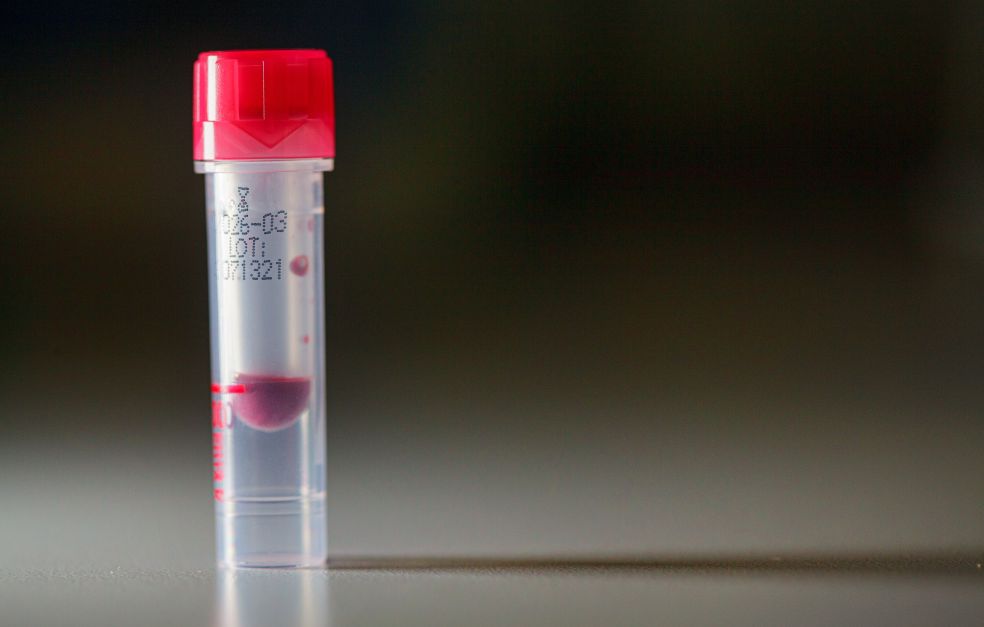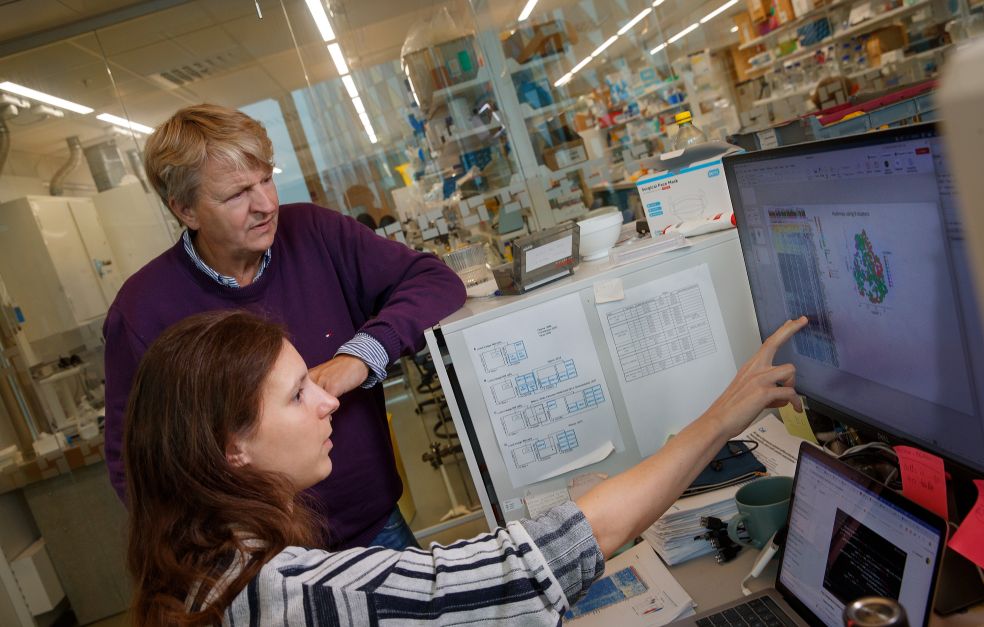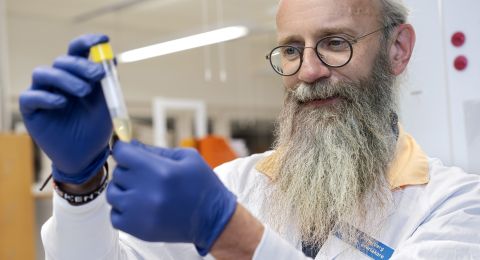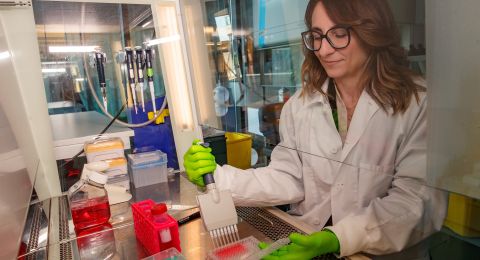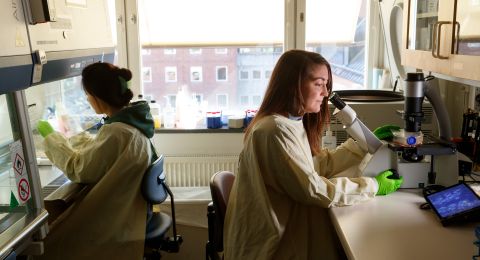Sometimes the body’s platelet count can fall to dangerously low levels. Wallenberg Scholar Sten Eirik Waelgaard Jacobsen’s research team has discovered a new type of blood stem cell possessing the potential to boost platelet production. They are also examining the role played by blood stem cells in the development of blood cancer.
Sten Eirik Waelgaard Jacobsen
Professor of Stem Cell Biology and Regenerative Medicine
Wallenberg Scholar
Institution:
Karolinska Institutet
Research field:
Exploring blood stem cells in order to find more effective therapies for blood cancer and other diseases
Every second of our lives blood stem cells in our bone marrow produce millions of red and white blood cells, along with a third type of blood cell called platelets, or thrombocytes. Above all, platelets ensure that the blood is able to clot if needed. But they can also respond to infections in the body and become hyperactive.
Waelgaard Jacobsen, professor at Karolinska Institutet (KI), is heading a research team studying blood stem cells in healthy mice and mice with blood cancer. Blood stem cells in mice are similar to those in humans, as is blood formation.
The researchers have managed to identify individual stem cells in the mice so they can characterize them. Six years ago the team achieved a major international breakthrough when they discovered a new type of blood stem cell whose sole task is to produce platelets. This newly discovered type of stem cell is probably also present in humans.
“Studies made by other research teams suggest this is so,” says Waelgaard Jacobsen.
His team’s research on the blood system is important since diseases such as various forms of leukemia – and also cancer therapies – can reduce the platelet count to dangerously low levels.
Producing only platelets
Most blood stem cells produce all types of blood cells, including platelets, and are therefore called “multipotent.” The newly discovered blood stem cells have the same ability – but for some reason only produce platelets. What is more, they seem to do so more quickly than normal blood stem cells, thanks to the fact that they omit some of the steps in “normal” blood stem cell platelet production.
The researchers do not yet know why this is, however.
“We’re keen to understand why the newly discovered stem cells do this, what their function is, and whether it’s purely beneficial, or if there may be a downside. In other words, is there a link to platelet hyperactivation, which can lead to blood clots, perhaps in conjunction with severe infections and ageing? It’s vital to clarify this issue, and it’s something we’re focusing on,” explains Waelgaard Jacobsen.
Having recently demonstrated that the different kinds of blood stem cells produce platelets via two separate processes, the research team now wants to ascertain whether this impacts platelet traits. They are studying the question in collaboration with researchers specializing in platelets in Cambridge in the U.K.
Waelgaard Jacobsen became fascinated by the secrets of blood formation early on in his research career. He is particularly interested in our vital blood stem cells. Without them, blood production ceases.
“Blood stem cells produce not only millions of blood cells every second; they also make a copy of themselves when they divide – thereby maintaining the blood system throughout life. They do so even when transplanted in another individual,” he says.
Finding new therapies
When blood stem cells divide they may acquire mutations over time, transforming into cancer stem cells and causing blood cancer. The KI researchers are also attempting to identify and characterize cancer stem cells in blood cancer patients. The goal is to develop therapies that effectively eliminate blood cancer stem cells.
The research team wants to examine the hypothesis that it is necessary, and also sufficient, to eliminate all cancer stem cells in order to eradicate the cancer. This will give them vital knowledge about the role played by blood stem cells in blood cancer.
The most established therapy in regenerative medicine is to transplant blood stem cells from a healthy donor in a patient with leukemia, for instance, in order to replace the diseased stem cells with new, healthy blood stem cells.
Yet there is still a risk of relapse. What part do blood cancer stem cells play in that case?
Blood stem cells produce not only millions of blood cells every second; they also make a copy of themselves when they divide – thereby maintaining the blood system throughout life.
Active or hidden stem cells
Some normal blood stem cells and also blood cancer stem cells are always active, and divide in order to produce new cells, but most are inactive and dormant. This makes it harder for therapies to target them.
The team is therefore investigating whether they can activate dormant blood cancer stem cells so they can be eliminated using established and new therapies.
They are also using molecular methods to identify new therapeutic blood cancer cell targets in collaboration with a research team at the Norwegian Radium Hospital in Oslo, which is a world leader in immunotherapies based on T lymphocytes, a type of white blood cell in the immune system.
The goal is to create new therapies that involve aiming T cell attacks specifically at cancer mutations in blood cancer stem cells in order to eliminate them without harming healthy blood stem cells.
Text Monica Kleja
Translation Maxwell Arding
Photo Magnus Bergström


